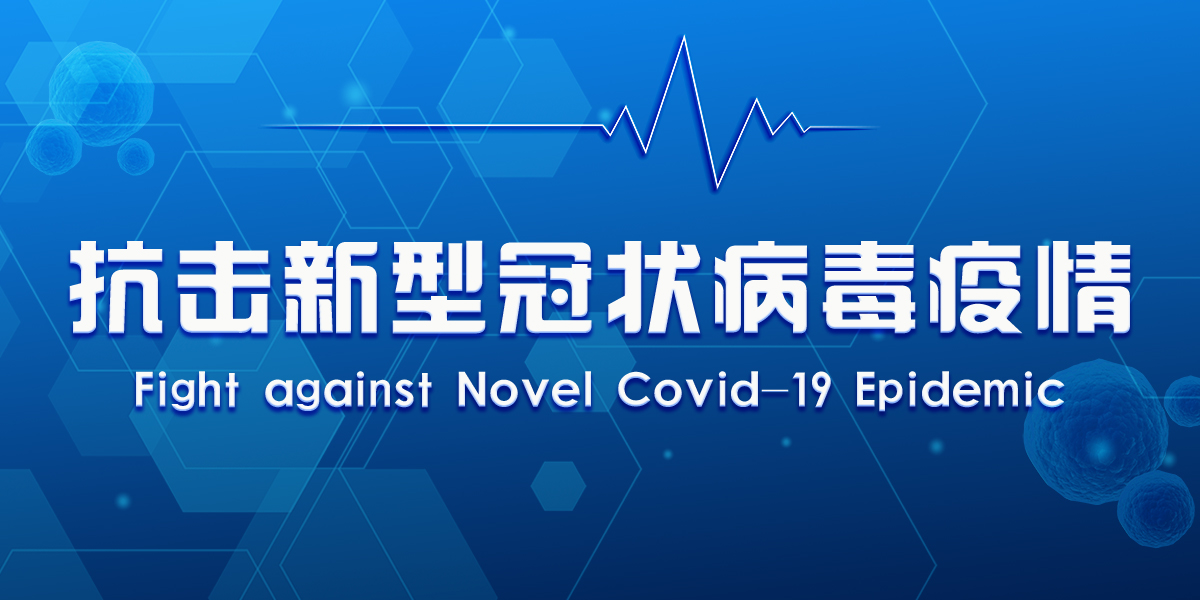
The recent outbreak of novel coronavirus pneumonia (NCP, or COVID-19) has been identified as a major public health emergency with the fastest transmission, the widest geographical spread and the highest level of difficulty of containment the People’s Republic of China has ever been confronted with since its founding. Since the outbreak began, the Communist Party of China (CPC) and the Chinese government have acted out of the paramount concern for the life, safety and health of the people. The entire nation, united as one has launched a fight with the most comprehensive, rigorous and thorough measures to contain the spread of the epidemic, protect the health and security of both the Chinese people and expatriates from various countries and ultimately to safeguard global public health.
First, the battle against the outbreak has been fought under the personal guidance and direction of General Secretary Xi Jinping. Giving the most urgent priority to epidemic response in the work of both the Party and the country, General Secretary Xi Jinping has taken prompt and firm decisions, calling for the all-out efforts of the whole Party, the entire Army and all Chinese people to fight the battle against the epidemic and resolutely defeat the outbreak in this peoples war, total war and blocking action. General Secretary Xi has since followed closely the latest development of the epidemic, and arrived at a series of major decisive instructions in a timely manner, pointing the way for and injecting fresh impetus to the response efforts. The courage and confidence of the Chinese people were greatly inspired.
Second, a high-performing inter-agency task force has been put in place without delay. The Central Leading Group on Responding to the Novel Coronavirus Pneumonia Outbreak, which was set up immediately following the outbreak sent a central oversight group to Wuhan, Hubei Province, the epicenter to offer on-site guidance. An inter-agency task force mechanism consisting of over 30government departments was established to coordinate nation-wide response. The operation of this mechanism has enabled nationwide mobilization, deployment and implementation, providing the organizational and institutional guarantee for the success of response efforts.
Third, utmost efforts have been made to contain the source of infection and cut off the transmission route. Prompt instructions were issued to relevant localities on exercising strict control over all outflow of people. Provinces across China have activated first-level public health emergency response one after another, calling for minimized outdoor activities and utmost synergy for epidemic control while carrying out grid-based management at community level. Preemptive measures such as holiday extension, deferring the new school semester, flexible restoration of economic activities and staggered working hours have greatly reduced the chance of cross-infection.
Fourth, nation-wide support has been funneled to the epicenter. Nineteen provinces have been instructed to participate in a pairing-up arrangement, with each assisting one city in Hubei Province. Accordingly, over 41,600 health workers of 330-plus medical teams from across the nation have raced against the clock to assist Hubei Province and indeed Wuhan. Temporary field hospitals including Huoshenshan and Leishenshan and other mobile cabin hospitals have been constructed and commissioned at lightning speed, greatly enhancing the ability of the city to admit and treat patients with better facilities. Furthermore, ensuring the supply of medical resources and daily necessities to Wuhan and Hubei at large has been implemented as a national priority.
Fifth, a science-based approach has been taken to contain the outbreak. Effective diagnostics and therapeutics have been disseminated without delay to all hospitals. A total of seven editions of “Guidelines on the Novel Coronavirus-infected Pneumonia Diagnosis and Treatment” have been rolled out on an up-dated basis. All-out efforts have been made in the R&D of vaccine and specific medicine. Traditional Chinese Medicine therapy is also encouraged. Efforts have been made to fully mobilize health workers, scientists and technologists. As summarized from the practice in China, early detection, reporting, quarantine and treatment of cases are the standard procedures for more efficient containment. On the treatment side, patients in severe conditions should be admitted to the facilities where the best resources and professionals are pooled. Increasing admission rate and recovery rate while lowering infection rate and mortality rate are set as the priority and major targets, which has won full recognition of the WHO.
Sixth, a holistic approach has been taken to coordinate economic and social development with epidemic control. Region-specific and multi-leveled plan have been formulated in time to restore economic and social order nationwide. Regions with low infection risks should ensure full restoration. Those with medium-risks should effect restoration in an orderly manner in light of the epidemic situation. Those with high risks should continue to be fully dedicated to epidemic containment and mitigation. Macro-policy regulation and control have been strengthened and a series of measures to stabilize the labor market have been put in place. Efforts have also been made to retain foreign investment and shore up foreign trade, ensure smooth operation of enterprises and provide greater support to companies and projects affected by the epidemic. To date, industries related to economic fundamentals and people’s livelihood have almost all resumed full-scale production. The fundamentals sustaining China’s sound economic growth have not changed.
Seventh, international coordination and cooperation have been strengthened. In the course of this fight, China has shared information with the WHO and other countries in a timely fashion, worked closely with the multi-country experts in their fact-finding mission and have adopted proper measures to protect expatriates in China. As the virus has spread to some countries, we in China have demonstrated our empathy by sharing epidemic mitigation experience in a timely manner and providing all necessary support and help to those countries and regions severely affected by the epidemic. Detection kits, oxygen generators, protective suits and facial masks and other medical supplies were donated. At the time being, Chinese medical experts are working in a number of countries in assistance with the epidemic control efforts thereof.
Thanks to the concerted nationwide efforts, significant progress has been achieved in the battle against the epidemic. The work of prevention and control in China is gaining positive momentum, and the restoration of economic and social order is picking up pace. The daily number of confirmed cases across China has plummeted from over 10,000 during the peak to below 100. In provinces other than Hubei, the newly added confirmed cases per day has dropped to single-digit and over 70% of the confirmed patients have been cured and discharged from hospital.
The counter-epidemic measures China has taken and the positive results we have since achieved have been endorsed and applauded by the overwhelming majority of countries around the world. Political parties and their leaders from many countries, in their solidarity messages, expressed admiration for the brilliant decision and strong leadership of General Secretary Xi Jinping and hailed the speed and scale of Chinas unprecedented response. It has once again demonstrated the strength of the Chinese socialist system. The WHO Director General Tedros Adhanom Ghebreyesus noted that China’s forceful actions are protecting not only its own people, but also the rest of the world. China has bought time for the international community to enhance preparedness.
One of the important lessons the outbreak of this epidemic has taught us is that in this age of globalization, countries are more closely linked than ever before and mankind is increasingly becoming a community with a shared future. As General Secretary Xi Jinping pointed out, in today’s world, countries are faced with many challenges that no one can tackle alone and no country can retreat to the lone island of self-seclusion. Virus respects no borders. We call on all countries, political parties and peoples to work hand in hand to overcome the current difficulties and forge a community with a shared future for the fight against the epidemic so that we can defeat the epidemic at the earliest possible date and jointly build a beautiful world of peace and development.
Source:Article From Silk Road Think Tank Association
